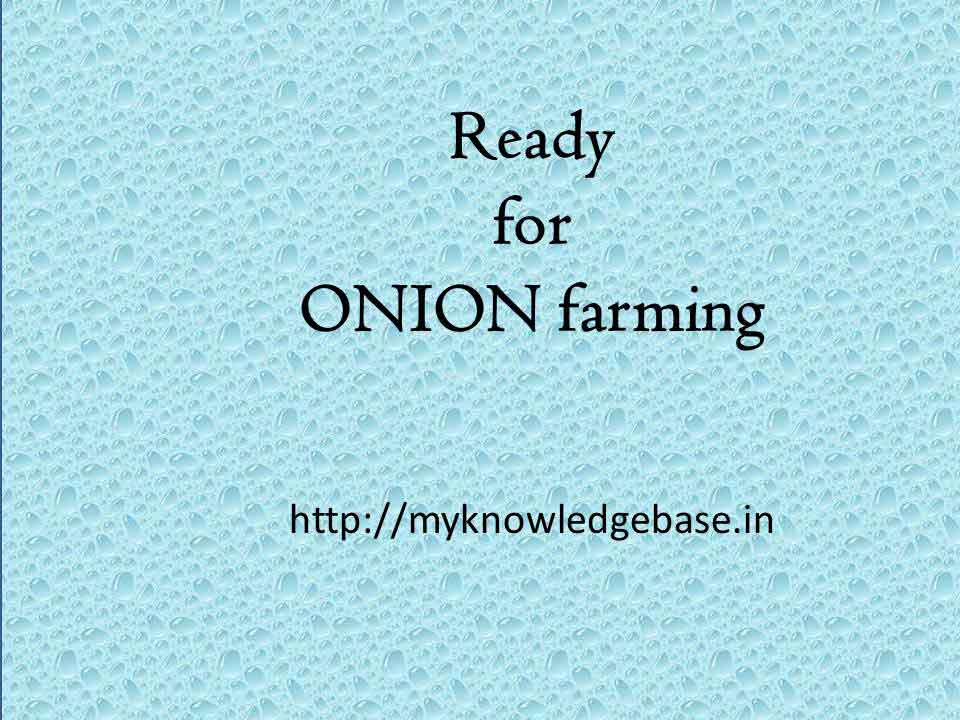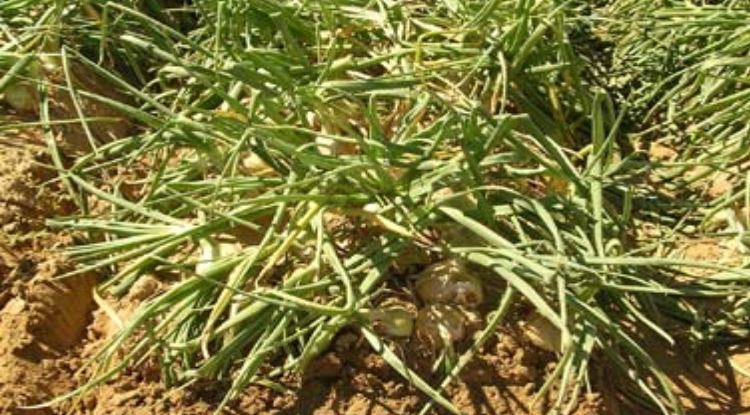ONION farming and uses
Some introduction to onion
Onion belongs to the family Amaryllidaceae with botanical name Allium cepa. Onion is thought to be originated in Pakistan. It is now grown almost world wide North America, Japan, Spain, Netherland, Canada, India, Pakistan being major growers. Total area of onion crops in the world under cultivation is considered to be about 20,00,000 hectare which gives about 3,00,00,000 metric tonnes of produce.
Suitable climate for onion growing.
It is grown under a wide range of climatic conditions. However, it cannot stand too hot or too cold weather. It prefers moderate temperature in summer as well as in winter. Short days are not favorable for the formation of bulbs.
Soil requirements
Onion can grow in all sorts of soils, but sandy loam and clay-loam soils are best for its cultivation. An ideal soil should have pH in between 6.5 to 8. The soil should be well aerated. Heavy soil should be avoided.
FYM (Farm Yard Manure) or compost should be incorporated during land preparation. Lay out should ensure that Soil has good internal drainage.
Salinity effect on onion yield
| Salinity Effect on Onion Yield | |
| Salinity as E.C. value | Percentage Decrease in yield |
| 1 -1.2 ds/m | 0% |
| 1.8 ds/m | 10% |
| 2.8 ds/m | 25% |
| 4 ds/m | 50% |
Therefore there is need to keep a check on the salinity of the soil. For further reading I suggest a read of my blog.
Methods of growing Onions
Onion is normally grown in two steps:
- Preparing seedlings from onion seeds in nurseries
- By planting seedlings in the field
Seedlings
The onion seeds are prepared for growing by first treating it with Trichoderma viride or Thiram for fungal resistance. After drying the seeds are sown in raised nursery beds which have been given proper dosage of farm yard manure and NPK in proportion (discussed in this article further). The beds have also been fumigated (also drenched with Bavistin) and all and any grass has been removed beforehand. Approximately 9-10 kg of seeds is sufficient for one hectare planting. The seeds are normally sown in the months of September/October. The onion seedlings are ready by January.
Planting
Land is prepared by ploughing 3 or 4 times (or as required). The earth should not have any lumps or boulders. It should be well aerated. The onion roots penetrate earth at shallow depths may be around 6-7 cms.
Fertilizer application actually depends upon the soil of the farmer. It is recommended to have the soil and water analyzed before deciding on the actual quantity of fertilizers. As a normal practice the following fertilizers are indicated for onion farming.
Farmyard manure around 250 kg per hectare. Add following as top dressing.
- 100-125 kg N/hectare
- 50-80 kg P/hectare
- 50-100 kg K/hectare
As per standard practice, Nitrogen fertilizers are given in two split dosage – one right in the beginning and the other after about 30 days.
The farmer may after studying his soil report also provide micro nutrients if indicated. Normally this is not required.
Planting is done at distances of 10 x 10 cm on flat surface. Sufficient watering is required for onions so that plants do not have water distress. Over watering however is detrimental for the onion plants. Watering is stopped when plants mature and start falling.
Weed control in Onion Farming
Weed control needs to be an important cultural operation. Weeding, thinning and earthing up are the important intercultural operations of Onion farming.
Shallow rooted inter-row cultivation and hand weeding may be used to minimize weeds in the inter row zone.
Control of Pests and Diseases in Onion Farming
Some information on insects, pests and disease of Onion is discussed below. The control measures depend upon type and intensity of the problems and also whether organic or inorganic pesticides are to be used as decided by the Farmer. For more information on pests and diseases please go through my blog on same.
- Downey Mildew: spraying Dithane M-45 at interval is recommended.
- Green Jassids: spray of chloropyrofos/ dichlorvos/dimethoate/phorate/imidacloprid
- Shoot and Fruit Borer: spray endosulfan/chloropyrofos. Spread phorate.
- White Fly: spray malathion. Drench with thimet.
- Thrips: spray imidaclorprid/chloropyrosdimethoate. Several sprays may be required.
Some supposed Health Benefits of Onion
This vegetable has a long history in traditional medicine. It has nutrients, vitamins, minerals and other organic compounds which gives onions a special medicinal value.
The nutritional value of 100g of edible Onion is said to be equivalent to 1 g protein, 0.1 g fat, 9 g carbohydrate, 0.15 g minerals and 1.2 g fibers. It contains vitamin B-6, vitamin C, iron and calcium. It’s low in calories and has a high dietary fiber content.
It is good in lowering of blood sugar levels !
Onion has been suggested to help manage blood sugar due to presence of sulfur compounds (S-methylcycsteine) and quercetin. These compounds have a beneficial effect in controlling the blood sugar level in the body.
Quercetin in red onions have significant role in destroying breast and colon cancer cells.
The same compound also prevents release of histamine in body. This helps in allergies.
Some other Benefits are thought to be in help in asthma and allergic rhinitis by using onion extracts. The use of onion is also good for eyes, oral healthcare and hair healthcare.
Risks of eating ONION
Like with everything which has good properties, Onion may also have some side effects. It is true that only a few studies Onion have linked to negative side effects.
Over consumption of onions for diabetic patients can be harmful.
It goes without saying that Onion can contain bacteria, pesticides, and other dangerous substances if it is not thoroughly washed.
Harvesting of Onions
Onions are harvested after the foliage dies down and the outer layers of onion bulbs are dry and peeling off. The harvested onions are dried, graded and ready for market or for storage.
note: The author himself is a small farmer and involved with such farming. Certain data are taken from usually reliable sources on the net.


Leave a Reply